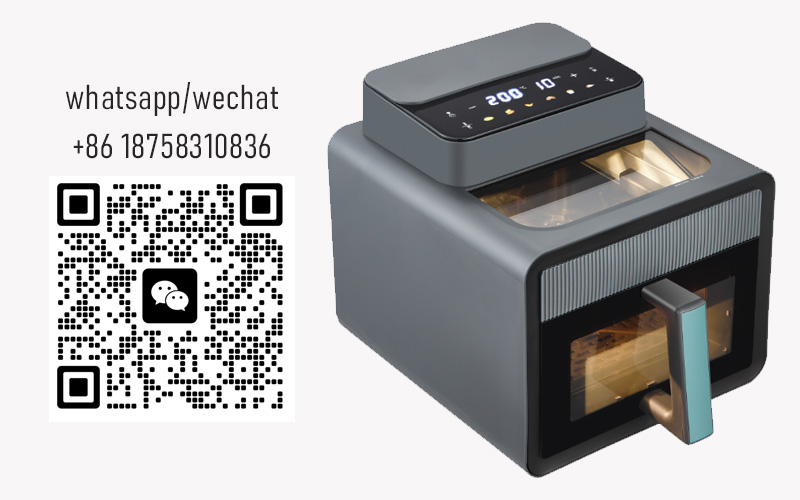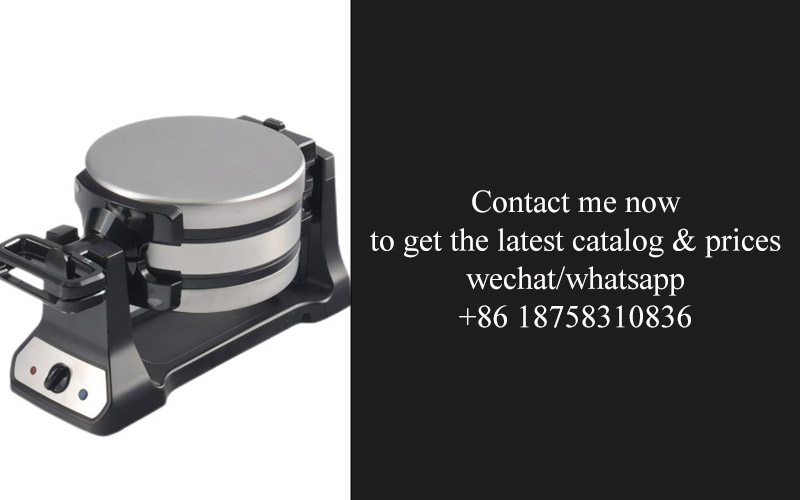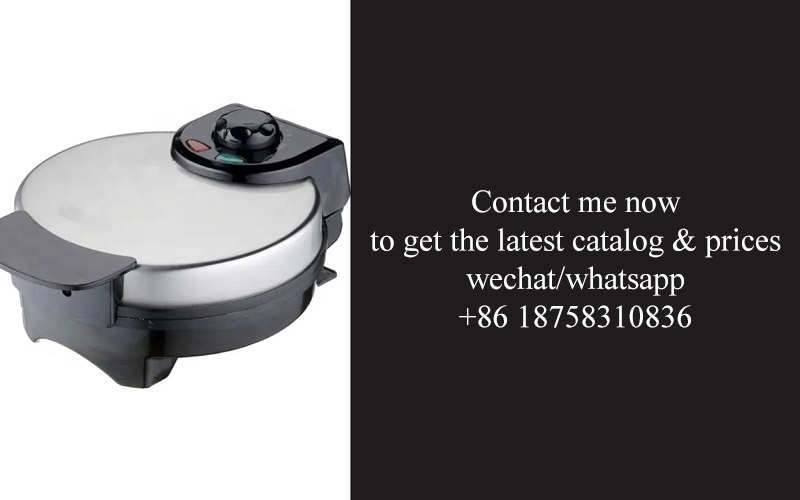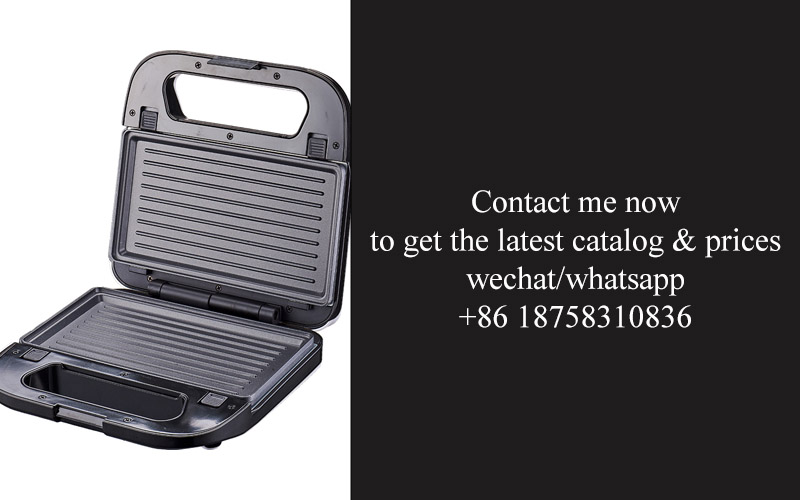Address
304 North Cardinal
St. Dorchester Center, MA 02124
Work Hours
Monday to Friday: 7AM - 7PM
Weekend: 10AM - 5PM
Address
304 North Cardinal
St. Dorchester Center, MA 02124
Work Hours
Monday to Friday: 7AM - 7PM
Weekend: 10AM - 5PM

In an era where innovation and adaptability are key, the kitchen appliance industry is undergoing a transformation that echoes the broader shifts in global supply chains. As consumer preferences evolve and new technologies emerge, the landscape of kitchen appliances is being reshaped. This article delves into the latest trends, the role of import substitution programs, the innovative ideas driving product development, and the challenges and opportunities that lie ahead for the industry.
The landscape of global supply chains has undergone a remarkable transformation, especially within the kitchen appliance industry. Once dominated by a few global giants, the landscape is now witnessing a shift that is reshaping the way products are manufactured, distributed, and consumed.
Historically, kitchen appliances were largely produced in countries with advanced manufacturing capabilities, such as China, South Korea, and Germany. These countries offered a combination of skilled labor, efficient production processes, and the latest technology. However, the ease of global trade allowed European and American markets to import these goods with relative ease, often at competitive prices.
As trade policies and economic dynamics have changed, the once predictable flow of goods has become more complex. The rise of import substitution programs has been a significant factor in this shift. These programs, aimed at reducing dependence on foreign suppliers, have spurred the development of local manufacturing capabilities in many European and American countries.
One of the key drivers behind this shift is the need for greater supply chain resilience. The global financial crisis of 2008, followed by the COVID-19 pandemic, highlighted the vulnerabilities of long and thin supply chains. Companies now recognize the importance of having a more diverse and localized supply base to mitigate risks.
The implementation of import substitution programs has been varied, with some countries focusing on developing specific sectors within kitchen appliances, such as refrigerators, dishwashers, and cooktops. Others have taken a broader approach, seeking to create a more robust domestic manufacturing ecosystem.
In Europe, for example, the EU’s Industrial Policy Strategy has been instrumental in promoting the development of a more resilient and competitive industrial base. This strategy includes measures to support domestic production, including incentives for investment in new technologies and research and development (R&D).
Similarly, in the United States, there has been a growing emphasis on “Made in America” campaigns, which not only promote national pride but also encourage companies to invest in domestic manufacturing facilities. This shift is supported by various policies, such as the Tax Cuts and Jobs Act of 2017, which provided tax incentives for companies that repatriated profits and invested in domestic operations.
The rise of import substitution programs has also been fueled by the desire to reduce costs and improve sustainability. By manufacturing locally, companies can reduce transportation costs and carbon emissions associated with long-distance shipping. Additionally, local production allows for a quicker response to market changes and consumer needs.
On the ground, this shift is evident in the emergence of new suppliers and manufacturers. In countries like Poland, Turkey, and Mexico, local firms are increasingly able to compete with their global counterparts in terms of quality and price. These companies are leveraging their proximity to European and American markets to offer faster delivery times and more tailored products.
Furthermore, the rise of e-commerce has played a significant role in facilitating the growth of local suppliers. Online platforms provide a level playing field for small and medium-sized enterprises (SMEs) to reach a wider audience, often at a lower cost than traditional retail channels.
In the kitchen appliance industry, the focus on import substitution is also leading to innovation. Local manufacturers are pushing the boundaries of design and technology, creating products that are not only cost-effective but also environmentally friendly. This emphasis on sustainability is particularly important in the kitchen appliance sector, where energy efficiency and eco-friendly materials are becoming increasingly critical consumer concerns.
Overall, the shift in global supply chains within the kitchen appliance industry is a multifaceted phenomenon. It is driven by a combination of economic, political, and environmental factors, each contributing to a more diverse and resilient industry landscape. As the world continues to evolve, the role of import substitution programs is likely to become even more pronounced, shaping the future of kitchen appliance manufacturing and distribution.

The role of import substitution programs in the European and American kitchen appliance industry has become increasingly significant as global supply chains evolve. These programs, designed to reduce reliance on foreign imports, are reshaping the competitive landscape and fostering local innovation.
1. A Response to Globalization’s Challenges
As the world becomes more interconnected, the kitchen appliance industry has seen a surge in international trade. However, this reliance on imports has made the sector vulnerable to external shocks, such as trade disputes, geopolitical tensions, and supply chain disruptions. Import substitution programs aim to mitigate these risks by encouraging the production of local goods.
2. The Strategic Approach
These programs typically involve a strategic shift in policy and investment. Governments and industry stakeholders collaborate to provide incentives for domestic production, including tax breaks, subsidies, and infrastructure development. The goal is to create a supportive environment that allows local manufacturers to compete with foreign counterparts.
3. Boosting Local Industry Competitiveness
By promoting the development of local manufacturing capabilities, import substitution programs can significantly enhance the competitiveness of the domestic kitchen appliance industry. This is achieved through increased investment in research and development, which leads to the creation of innovative products tailored to local consumer needs and preferences.
4. Encouraging Innovation and Quality
Local manufacturers, under the pressure of import substitution, are often pushed to innovate. They must develop new technologies, improve production processes, and ensure product quality to remain viable in the market. This focus on innovation can lead to the emergence of unique kitchen appliance solutions that may outperform imported goods.
5. Job Creation and Economic Growth
One of the primary objectives of import substitution programs is to create jobs and stimulate economic growth. By nurturing local manufacturing, these programs can lead to the expansion of the domestic workforce and the generation of new employment opportunities. This, in turn, can have a positive ripple effect on local economies.
6. Nurturing a Supply Chain Resilience
The disruption of global supply chains during recent years has underscored the importance of a robust local supply chain. Import substitution programs help build resilience by ensuring that critical components and parts are produced domestically, reducing the risk of supply chain bottlenecks.
7. The Role of Consumer Behavior
Consumer behavior plays a crucial role in the success of import substitution programs. As consumers become more conscious of local products, there is a growing preference for domestically manufactured kitchen appliances. This shift in consumer sentiment can be leveraged to further strengthen the domestic market.
8. The Balance Between Protectionism and Free Trade
While import substitution programs can be effective in protecting domestic industries, they must be balanced with the principles of free trade. Excessive protectionism can lead to inefficiencies and higher costs, potentially harming the long-term growth of the industry. Finding the right balance is essential to ensure that local industries thrive without stifling international trade.
9. The Long-Term Impact on Industry Dynamics
The implementation of import substitution programs can have a lasting impact on the dynamics of the kitchen appliance industry. Over time, these programs can lead to the development of a self-sustaining industry that is less dependent on foreign imports, contributing to greater economic independence and security.
10. The Challenges of Implementation
Despite the potential benefits, the implementation of import substitution programs is not without its challenges. These include the need for substantial investment, the potential for market distortions, and the risk of creating inefficient industries. Addressing these challenges requires careful planning, strong policy frameworks, and continuous monitoring and adjustment.

In the realm of import substitution, several key players have emerged as pivotal forces in reshaping the landscape of the European and American kitchen appliance industry. These entities are not just suppliers; they are innovators, strategists, and trendsetters, driving the movement towards localized production and reducing dependency on foreign markets.
1. Local Manufacturers Rising to the ChallengeLocal manufacturers have stepped up their game, leveraging their understanding of regional consumer preferences and cultural nuances. By focusing on quality and design, these companies are able to offer competitive products that resonate with their target markets.
2. Tech Giants Entering the Kitchen Appliance MarketTech behemoths have recognized the potential of the kitchen appliance sector and are now venturing into this space. Their integration of smart technology and connectivity into everyday kitchen appliances has set new standards and expanded the market appeal.
3. Small and Medium Enterprises (SMEs) as Driving ForcesSMEs, often overlooked in larger import substitution narratives, play a crucial role. They are agile, creative, and able to tailor products to niche markets. Their contribution to the movement is significant, as they often fill gaps left by larger corporations.
4. Collaborations with Design FirmsSeveral key players have formed strategic partnerships with design firms to push the boundaries of kitchen appliance aesthetics. This synergy between technology and design has led to innovative and visually appealing products that appeal to consumers seeking both form and function.
5. Focus on SustainabilityA growing number of companies are prioritizing sustainability in their product development. They are investing in eco-friendly materials, energy-efficient designs, and manufacturing processes that minimize their environmental impact. This focus on sustainability is resonating with environmentally conscious consumers.
6. Investment in Research and DevelopmentInnovation is at the heart of the import substitution movement. Key players are investing heavily in R&D to develop cutting-edge technologies that can differentiate their products from imported goods. This includes advancements in materials science, smart functionality, and user experience.
7. Government Support and IncentivesSeveral governments in Europe and America have recognized the importance of import substitution and have introduced policies and incentives to support local manufacturing. These include tax breaks, grants, and streamlined regulatory processes to encourage domestic production.
8. Global Supply Chain PartnershipsDespite the focus on local production, key players in the import substitution movement often maintain global supply chain partnerships. This allows them to source materials and components efficiently while also retaining the ability to adapt quickly to international market demands.
9. Market Expansion and Export OpportunitiesAs domestic markets stabilize and grow, key players are looking to expand internationally. Their locally produced appliances are often priced competitively and cater to the specific needs of different regions, making them attractive to a global audience.
10. Customer-Centric ApproachesUnderstanding and anticipating customer needs is central to the strategies of key players in the import substitution movement. By engaging in customer research and feedback, these companies are able to develop products that not only meet but exceed expectations.
These key players, through their varied approaches and collaborative efforts, are at the forefront of the import substitution movement, driving a new era of innovation and self-sufficiency in the kitchen appliance industry.

In the ever-evolving world of kitchen appliances, innovation is the driving force behind staying relevant and competitive. From smart technology integration to eco-friendly designs, here are some innovative product ideas that are shaping the future of kitchen appliances:
Voice-Controlled Cooking AppliancesWith the rise of smart homes, appliances that can be controlled via voice commands are becoming increasingly popular. Imagine a kitchen where you can ask your refrigerator to order groceries or your oven to preheat at a specific temperature using just your voice.
Modular Kitchen SystemsModular kitchen appliances offer versatility like never before. These units are designed to be easily swapped out or expanded as needed, allowing homeowners to customize their kitchen space according to their evolving needs or preferences.
Energy-Efficient and Eco-Friendly AppliancesAs environmental concerns grow, manufacturers are focusing on creating kitchen appliances that are not only energy-efficient but also made from sustainable materials. Think of refrigerators with LED lighting and solar-powered ovens that reduce the carbon footprint.
Smart Kitchen HubsSmart kitchen hubs are becoming the central nervous system of modern kitchens. These devices can control various appliances, provide cooking recipes, and offer health and nutrition advice, all from a single interface.
Integrated Waste Management SystemsAppliances that integrate waste management into their design are not only functional but also contribute to a cleaner kitchen environment. For example, dishwashers that use less water and energy, and food processors that automatically compost waste into nutrient-rich soil.
Interactive Cooking ToolsInteractive cooking tools, such as smart knives or recipe-following mixers, take the guesswork out of cooking. These devices can guide you through the cooking process, ensuring that every dish is prepared to perfection.
Multi-Functional AppliancesCombining the functions of multiple appliances into one can save space and reduce clutter. Imagine a countertop unit that can act as a blender, food processor, and juicer, all in one.
Personalized Cooking AppliancesCustomization is key in the modern kitchen, and some appliance manufacturers are offering products that can be tailored to individual preferences. From adjustable temperature settings on ovens to programmable cooking times on toasters, these appliances cater to a wide range of tastes and cooking styles.
Healthy Cooking AppliancesWith a growing focus on health and wellness, there’s a trend towards appliances that make it easier to cook healthy meals. This includes air fryers that use less oil, pressure cookers that reduce cooking times and preserve nutrients, and countertop smokers that offer a healthier alternative to traditional smoking methods.
Augmented Reality Cooking GuidesAugmented reality (AR) is making its way into the kitchen with cooking guides that overlay virtual ingredients and instructions onto your countertop. This technology can help even the most inexperienced chefs follow recipes with precision.
Water-Saving AppliancesWater conservation is a critical issue, and appliance manufacturers are responding with products that use less water. From dual-flush toilets to low-flow faucets and dishwashers, these appliances are designed to minimize water usage without compromising performance.
Solar-Powered Kitchen GadgetsFor those who want to take sustainability to the next level, solar-powered kitchen gadgets are becoming more accessible. From solar ovens to solar-powered chargers for kitchen appliances, these gadgets help reduce reliance on traditional energy sources.
These innovative product ideas are just the beginning of what’s to come in the world of kitchen appliances. As technology continues to advance, we can expect even more creative and efficient solutions that will revolutionize how we cook and live in our kitchens.

The integration of smart technology has become a cornerstone in the kitchen appliance industry, with manufacturers focusing on creating appliances that not only enhance functionality but also integrate seamlessly into homeowners’ digital ecosystems. From voice-controlled fridges to smart ovens that can be programmed remotely, the trend towards connected kitchen appliances is undeniable.
Consumer demand for energy-efficient appliances is at an all-time high. With the increasing awareness of climate change and rising energy costs, consumers are looking for kitchen solutions that promise to save them money while reducing their carbon footprint. This has spurred innovation in areas like induction cooktops, LED lighting in appliances, and energy-saving refrigeration systems.
The trend towards healthier eating habits has significantly influenced the design of kitchen appliances. For example, slow cookers and pressure cookers have seen a resurgence as they offer convenient and nutritious cooking methods. Similarly, appliances designed to aid in juicing and meal prepping are becoming more popular, reflecting the growing market for health-conscious consumers.
Customization and personalization are becoming key factors in the appliance market. Many companies are offering modular designs that allow customers to build their own kitchen setups, choosing specific features and functions that meet their individual needs. This approach caters to a variety of lifestyles and preferences, from single homeowners to large families.
There’s a noticeable shift towards sustainability in kitchen appliances. Brands are increasingly using recycled materials in their products and focusing on the lifecycle of the appliance, ensuring that they are designed for durability and recyclability. This trend is not only eco-friendly but also appeals to environmentally conscious consumers.
The rise of smart kitchens is being driven by advancements in IoT (Internet of Things) technology. Smart appliances can communicate with each other and with the user, offering a level of convenience and efficiency that was once only seen in sci-fi movies. From smart refrigerators that can suggest recipes based on the ingredients inside to smart ovens that can be controlled via a smartphone app, the smart kitchen is fast becoming a reality.
Energy monitoring has become an integral part of kitchen appliances, with some models now featuring built-in energy monitors that provide real-time data on energy consumption. This feature not only helps consumers understand their energy use but can also assist in reducing overall utility bills.
Appliances with integrated food storage solutions are also gaining traction. For instance, some refrigerators come with built-in vacuum sealers and food dehydrators, providing a comprehensive solution for food preservation. This kind of innovation is particularly appealing to those interested in preserving the nutritional value of their food for longer periods.
The kitchen has traditionally been a place for family gatherings and culinary exploration, and new appliances are designed to encourage this. From double ovens that allow for simultaneous cooking at different temperatures to countertop mixers that can be used to create intricate doughs and batters, appliances are becoming more versatile and multifunctional.
Lastly, there’s a growing emphasis on user experience, with appliances becoming more intuitive and easier to use. Touchscreen interfaces, voice activation, and even gesture controls are being implemented to ensure that the technology in the kitchen is not just innovative but also accessible to all users, regardless of age or technological proficiency.

In the ever-evolving landscape of the kitchen appliance industry, consumer preferences play a pivotal role in shaping market dynamics. Understanding these preferences and the market’s response is crucial for suppliers looking to innovate and stay ahead. Here’s a glimpse into how consumer tastes are driving market responses:
Consumer demands for energy efficiency have surged, reflecting a broader environmental consciousness. As a result, appliances with high energy ratings and eco-friendly features are gaining popularity. The market’s response includes a proliferation of smart kitchen gadgets that not only save energy but also provide real-time usage insights.
Smart technology has become a cornerstone in kitchen appliance design. Consumers are increasingly drawn to appliances that can be controlled remotely, offering convenience and integration with smart home systems. The market’s response has been the rise of IoT (Internet of Things) enabled appliances, with a focus on seamless connectivity and user-friendly interfaces.
Health and wellness have taken center stage in kitchen appliance design. Consumers are seeking appliances that not only enhance their culinary experiences but also support healthy lifestyles. Market responses include the introduction of sous-vide cookers, air fryers, and multi-functional appliances that offer healthier cooking options without compromising on taste.
Customization is another trend that’s resonating with consumers. People want appliances that can be tailored to their specific needs, whether it’s a countertop oven with customizable temperature settings or a refrigerator with adjustable shelves. The market’s response is a growing selection of modular and customizable kitchen appliances.
Sustainability is a growing concern, and consumers are looking for appliances that are not only built to last but also have a smaller carbon footprint. This preference is driving the market to respond with more sustainable materials and designs, including appliances made from recycled materials and those with a longer lifespan.
The demand for convenience is relentless, with consumers gravitating towards appliances that can simplify daily tasks. The market’s response includes innovations like self-cleaning ovens, programmable slow cookers, and automated dishwashers that offer hands-free operation and save time.
As the world becomes more diverse, so does the palate. Consumers are exploring a wider range of cuisines, which is prompting the market to respond with a variety of international-inspired kitchen appliances. From pasta makers to sushi rolling mats, these gadgets cater to the growing interest in global culinary traditions.
Safety is a paramount concern, and the market is responding by incorporating advanced safety features into kitchen appliances. This includes features like child locks, automatic shut-offs, and smart sensors that prevent overcooking or overheating.
The market’s response to the growing trend of home entertainment is the introduction of kitchen appliances that serve dual purposes. For instance, appliances that can double as a coffee bar or a wine cooler are becoming popular, reflecting a consumer desire for multifunctional spaces.
Lastly, the rise of the influencer and the DIY movement has had a significant impact on consumer preferences. The market’s response includes more stylish and design-forward appliances that are as much a statement piece as they are a functional tool.
These shifts in consumer preferences and the market’s corresponding responses are a testament to the dynamic nature of the kitchen appliance industry. Suppliers who can adapt and anticipate these changes are poised to capture the hearts and minds of consumers, leading the way in the ever-changing landscape of kitchen technology.

In the evolving landscape of the kitchen appliance industry, challenges and opportunities often coexist, shaping the trajectory of growth and innovation. Here’s an exploration of the dual nature of this dynamic:
The rise of smart technology has brought both a challenge and an opportunity. On one hand, it demands a continuous cycle of innovation to keep up with rapidly changing consumer expectations. On the other, it opens doors to new functionalities and integration possibilities, allowing manufacturers to create appliances that offer a seamless blend of convenience and connectivity.
Energy efficiency is another area where challenges and opportunities intersect. As environmental concerns escalate, there’s a push for appliances that consume less energy, which can be challenging to produce at a competitive cost. However, this also presents a chance for manufacturers to differentiate their products, attract eco-conscious consumers, and potentially secure a competitive edge.
Consumer safety standards are a constant challenge, but they also provide clear opportunities. Adhering to stringent safety regulations can be costly, but it also builds trust and brand loyalty. Companies that invest in safety and quality often find themselves at the forefront of consumer confidence, which can lead to increased market share.
The integration of kitchen appliances with home automation systems is a challenge that requires a deep understanding of both appliance technology and smart home ecosystems. However, this integration is also an opportunity to create a cohesive and user-friendly environment that enhances the overall kitchen experience.
The global supply chain disruptions have presented a significant challenge to the industry, forcing companies to find alternative suppliers and distribution channels. Despite the difficulties, this has also sparked opportunities for regional suppliers to step up and meet the demand, fostering local economies and reducing reliance on international markets.
The shift towards healthier living has challenged appliance manufacturers to develop products that cater to these trends, such as slow cookers and air fryers. On the flip side, this shift has created a vast market opportunity for innovative health-conscious appliances that can transform cooking into a more nutritious and enjoyable experience.
The challenge of market saturation cannot be overlooked. With so many players in the market, standing out is difficult. However, this saturation also means that there’s room for niche products that cater to specific consumer needs or preferences, offering unique opportunities for those who can identify and cater to these underserved markets.
The trend towards personalization is both a challenge and an opportunity. Customizing products to meet individual customer requirements can be complex and costly. However, it also allows companies to create a deeper connection with consumers, fostering brand loyalty and potentially commanding higher prices for premium, tailored offerings.
Lastly, the challenge of keeping up with evolving consumer lifestyles is a relentless one. This is particularly true as the world becomes more urbanized and consumers demand more compact, efficient appliances. Conversely, this challenge also presents a golden opportunity for manufacturers to innovate and create products that are not only functional but also aesthetically pleasing and adaptable to the fast-paced lives of modern consumers.

In the ever-evolving landscape of kitchen appliances, several challenges and opportunities are shaping the industry’s trajectory. Navigating these complexities requires a keen understanding of the market dynamics and a strategic approach to innovation.
The rise of e-commerce has democratized access to global markets, offering both challenges and opportunities. While it has allowed smaller players to reach a broader audience, it has also intensified competition and price sensitivity. Brands must adapt by offering unique value propositions and leveraging digital marketing to stand out.
Sustainability and eco-consciousness are increasingly influencing consumer purchasing decisions. Appliances that are energy-efficient and made from sustainable materials are not just environmentally friendly but also resonate with a socially responsible consumer base. This shift demands suppliers to invest in green technologies and sustainable practices.
Customization is another trend gaining traction. With consumers seeking appliances that cater to their specific needs and preferences, the industry is witnessing a surge in modular and customizable kitchen solutions. This requires suppliers to develop flexible manufacturing processes and cater to niche markets.
Data security and privacy concerns are also posing challenges. As smart kitchen appliances become more integrated with home automation systems, the need for robust cybersecurity measures is paramount. Suppliers must prioritize data protection and ensure that their products are secure against potential breaches.
The integration of technology is revolutionizing the kitchen appliance sector. Smart appliances that can be controlled remotely, provide real-time data, and even learn from user habits are becoming more common. This technological advancement offers opportunities for suppliers to create innovative products that enhance user convenience and efficiency.
Energy conservation remains a key focus. With rising energy costs and environmental concerns, appliances that consume less energy are in high demand. Suppliers can capitalize on this trend by developing energy-saving technologies and offering products that are certified by recognized energy efficiency programs.
The globalization of the kitchen appliance market brings both challenges and opportunities. Suppliers must navigate complex supply chains and comply with various regulatory standards across different regions. On the flip side, this global reach allows for access to new markets and collaboration with international partners.
The aging population presents a significant opportunity for the kitchen appliance industry. As people age, they often require appliances that are easier to use and safer. This demographic shift encourages suppliers to design products that cater to the needs of the elderly, such as stovetops with controlled flame settings and ovens with larger, easier-to-clean surfaces.
Lastly, the rise of health-consciousness is prompting a demand for appliances that can help consumers prepare healthier meals. This includes products that can monitor nutritional content, suggest recipes, and even assist in meal planning. Suppliers that can offer such health-focused solutions are likely to find a receptive market.
In summary, the challenges and opportunities in the kitchen appliance industry are multifaceted. From adapting to e-commerce and sustainability demands to embracing technology and catering to the aging population, suppliers must stay agile and innovative to thrive in this dynamic market. By capitalizing on these trends and addressing the evolving needs of consumers, the industry is poised for continued growth and transformation.